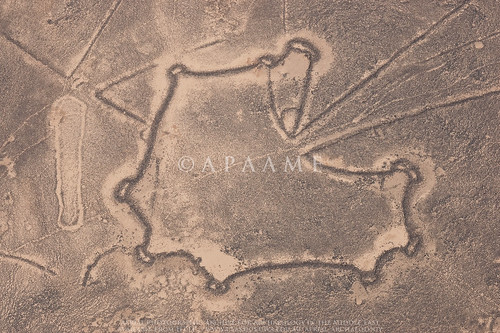Sharjah Archaeology Authority Organizes A Lecture On Stone Traps In Jordan

The Sharjah Archaeology Authority organized a remote lecture via the Zoom application, entitled ‘The History of Stone Traps in Jordan, Using the New Technology in the Luminescence of the Stone Surface’. Presented by DrSahar Al-Khasawneh, Head of Conservation and Management of Cultural Resources and Administration at the Faculty of Archaeology and Anthropology at Yarmouk University, the lecture was attended by 150 students from the Colleges of Archaeology, and this comes within the weekly scientific lectures series of the Sharjah Archaeology Authority.
DrSahar talked about the huge archaeological stone formations that represent a widespread phenomenon in the Levant region and the Arabian Peninsula and often date back to prehistoric times in Jordan, with many of the stone sites recorded as linear, circular or plane-shaped stone formations. DrSahar said: “We still know little about the history and function of these sites, and the reason for this is that these sites contain little archaeological materials that can be used for dating by traditional methods, in addition to the lack of direct dating technology for the stone used in building these sites.”
One of these formations, known as stone traps, was demonstrated by applying the latest technologies developed in the field of luminescence dating (rock surface dating).
Stone formations
DrSahar Al-Khasawneh began the lecture with a brief introduction to the stone formations, saying: “Stone formations are widespread in our region, and cannot be seen from the ground level. Aerial and satellite images helped to discover many of them, and we cite what was discovered in Jordan from the huge stone circles whose diameter reaches more than 10 kilometres, as well as tires, and linear formations up to 125 kilometres in length. In Saudi Arabia, there are gates, which are rocks arranged to form similar or new formations and patterns.”
DrSahar added: “The function of the stone formations, their purpose, and construction, have always been a point of interest for archaeologists. Some types of formations resemble a kite with chambers engraved in the ground. It is believed that they were used as intermediaries for wild animals such as deer, and this has been proven by zoologists, with stone inscriptions also confirmed the validity of this theory. According to discoveries made in Syria, hunters were pushing deer into these rooms to hunt them, and the inscriptions in Jordan revealed that deer animals were pushed into these rooms so that the hunting process could take place inside them. Slaughtering and skinning used to take place in another area, however, despite the spread of rock formations, the remains of animals were discovered in only a few formations.
History of the discovery of stone traps
A brief overview of the history surrounding the discovery of stone traps was outlined. The first discovery was in 1927 when British Royal Air Force planes were flying between Jordan and Baghdad, and pilots from high altitudes noticed the presence of prominent rock formations. So the first discovery was stone formations on Kites Authority, and over time new patterns were discovered and documented. In 2014, it was announced that there were approximately 4,616 stone formations discovered by analysing aerial and industrial images and Google Earth.
The formations are widely spread across Levant, Saudi Arabia, Yemen and East Asia. In Jordan, about 1000 stone formations were discovered, specifically in eastern and southern Jordan, where they were spread across large rocky areas. The lecture also dealt with the stone formation found in the Ghadawiyat Mountains located in the Al-Jafr region on the close borders with Saudi Arabia, which was unearthed by a research team supervised by researchers Wael Abu Aziz and Muhammad Tarawneh.
DrSahar indicated that in 2018, an exploratory excavation campaign was launched inside the stone formations rooms to find out the date of their construction. It was discovered that the rock walls were built at different heights, and it is believed that some walls were up to one meter high, but they collapsed due to natural factors.
Luminescence technology
She explained in detail the ‘light fluorescence’ technique, explaining that this technique has been used since the seventies, and from time to time it is added and updated. It was recently developed in cooperation with a scientific laboratory in Denmark, as it depends on the ability of some mineral formulations such as quartz in the sand to store energy as a result of its exposure to radiation from ground materials such as dirt and rocks.
DrSahar continued: “Energy is stored by the mineral to the point of saturation, and if it is exposed to erosion, heat, humidity and light over the years, it loses the stored energy, which prompts it to build energy again, and this is precisely what we measure, that is, how many times it gains energy. When examining the material in the laboratory, the goal is to know the number of times the energy has been stored since the last time it was exposed to light rays. Thus, we can date it accurately through a mathematical equation, which is to calculate the amount of stored energy divided by the annual energy storage rate.
And she concluded that the modern method developed by technology, through which it is now possible to know the date of exposure of the stone to the sun, and thus arrive at the history of stone formations.

